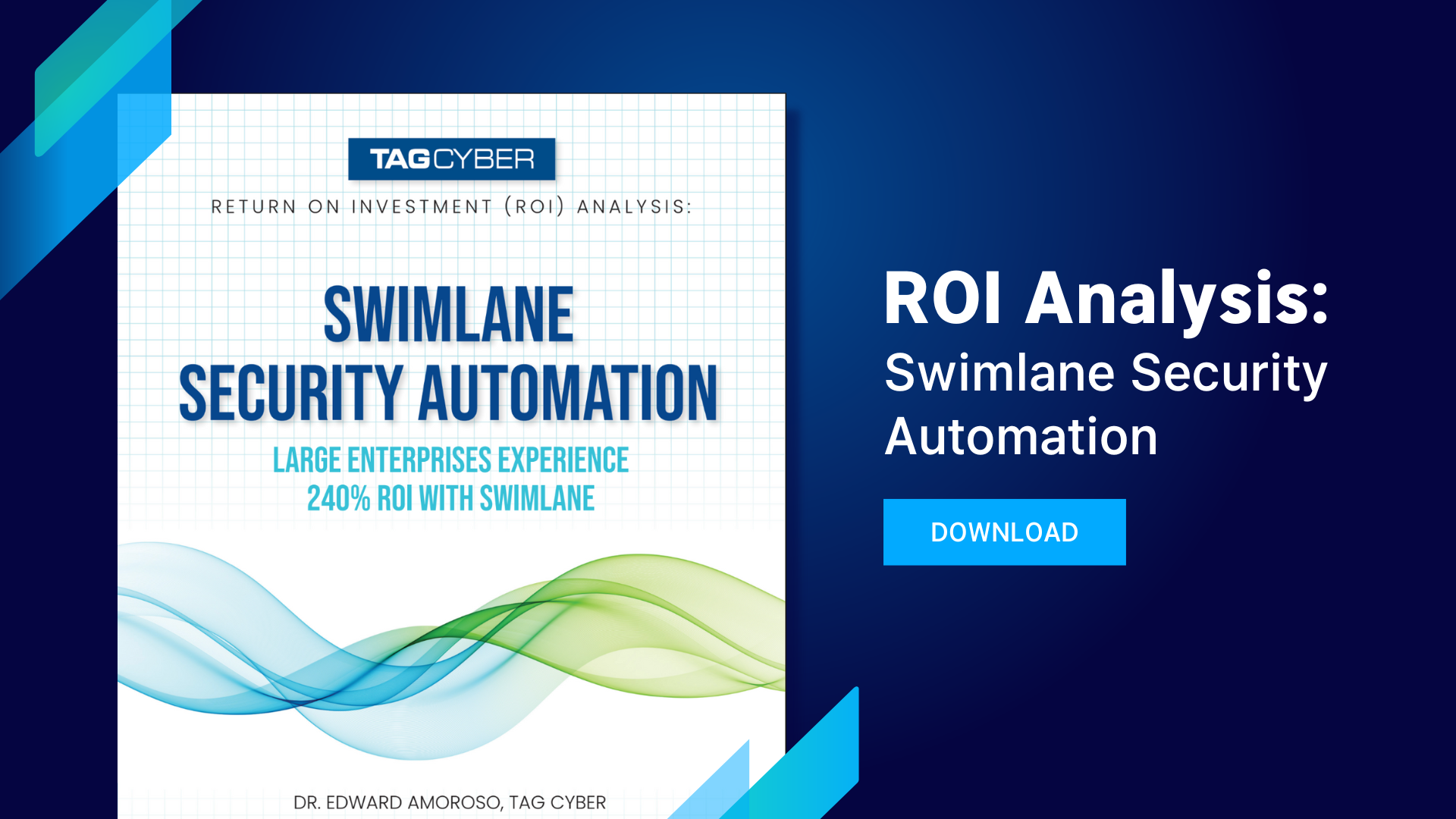Quantifying the business value of security is no small feat. Here’s how security automation helps.
Hackers have become more disruptive, attacks more sophisticated and organizations lose heaps of money to hackers and data breaches these days. The average cost of a data breach has risen to a staggering $4.24 million, and will only continue to grow. Combined with a grim economic forecast, it’s easy to see why security teams are feeling growing pressure nowadays.
Protecting your organization is an investment that shouldn’t be taken lightly. The truth though, is that staffing, infrastructure, training, and tools all quickly add up. While CISOs understand the value of their security investments, it’s more important than ever to prove performance and ROI to other key stakeholders in organizations. Security leaders need a solution that drives efficiencies in order to quickly improve metrics and reduce unnecessary costs in the short term and long term.
The secret tool: AI-enhanced security automation. It will help you ingest big data sets faster, automate easier, and turn anyone on your team into automators. These platforms are both approachable and scalable, and can securely integrate data from any source, which means teams of any size will become efficient so that they improve the effectiveness and ROI of their overall security program.
Read more about the key ways AI automation can maximize security ROI.
1. Lower Maintenance
Few things are worse than implementing a new tool into your tech stack, only to underestimate the cost of recurring maintenance. Maintenance can grow even more expensive if you need dedicated subject matter experts (SMEs) to upgrade software and configure it for your unique security environment.
AI-enhancedsecurity automation platforms like Turbine eliminate the need for code-heavy maintenance thanks to a resilient automation engine. This provides customers with a human-readable user experience so that processes like playbook-building are easy to adapt and maintain. It codifies business logic and best practices on the backend so that customers can build playbooks by simple drag and drop actions.
2. Real-time Testing and Validation
AI-enhancedsecurity automation streamlines the alert process to ingest data at the point of inception. This means security leaders can respond to threats the instant they occur – not after detection, data aggregation, and manual response.
This next-gen approach to data ingestion provides a range of advantages for security teams.
- Test changes and run validations in real-time, saving analysts time
- Reduce dwell time
- Speed up MTTD and MTTR
One notable feature that powers faster testing and validation is robust case management. This feature analyzes and enriches incident data in real-time so that analysts can spend time making high-level decisions instead of manual information gathering. Case management enables an array of response controls to be triggered with a single click. For instance, directly from a case record, analysts can initiate a SIEM search or trigger an action in their EDR platform. It’s easy to find answers faster with low-code automation’s case management.
3. Reduce the Need for Developers
Legacy automation tools, like security orchestration, automation, and response (SOAR) platforms have earned a reputation for having a high barrier to use. They require mature SOC teams that are equipped enough to handle the technology – that does not mean less-mature security teams don’t need security automation, too. In fact, it’s actually the less sophisticated organizations that need automation the most because they have smaller teams and are more likely to feel the challenges of the industry’s talent shortage more acutely.
The unfortunate truth: experienced SOC analysts are expensive and hard to find. With an average compensation of nearly $100,000 annually, paying your team is a significant chunk of the security budget. The price goes up with experience – it’s common to pay as much as $250,000 annually for a dedicated SME that can troubleshoot unique workflows and problems in the SOC. It’s even harder to train your security analysts to solve these tough problems alone.
Low-code security automation is a promising solution for the global talent shortage and skills gap. It features codeless capabilities that provide your existing people with a more effective human-readable user experience, like adaptable playbook-building adaptable that’s easy to maintain. Not only does this improve ROI by maximizing their time, but it can also offset hiring expenses by enabling you to hire less seasoned or fewer security analysts.
This kind of democratized automation enables domain experts to become citizen automators, which saves you time, money, and valuable resources.
4. Lower Total Cost of Ownership
When you look at the total cost of ownership (TCO) of security platforms, it’s critical to understand both the purchase price of the platform plus the costs of operation.
First, realize that not all security automation platforms offer an agnostic approach to integrations. Some limit you to only their suite of tools or a meager list of partner integrations. This could result in a higher upfront cost if you need to buy extra tools to use their automation platform. The flexibility of low-code security automation allows you to integrate with anything. Autonomous Integrations take this a step further, allowing you to connect to any API without assistance or development resources.
Next, how many security professionals will it take to successfully maintain the platform? Traditional SOAR platforms will require a larger headcount, which may not be realistic for smaller teams that need automation the most. Turbine’s adaptable playbooks and codeless conditions offer a user experience that is easy to adapt and maintain, even for the smallest teams.
Finally, ensure that you can save money in other areas in order to increase ROI. The cost your team could save by containing and resolving more threats faster could add up quickly. Turbine’s dynamic use cases like phishing and incident response – combined with outside the SOC use cases like fraud investigation and insider threats – prevent large costs lost to these threats.
The ROI of AI Automation
The numbers speak for themselves.
- Fortune 100 financial companies save $900k per year by using low-code automation (like Swimlane) to automate security use cases outside of the SOC.
- Other Fortune 100 companies automate thousands of hours of work to save $160,000 every month.
- According to TAG Cyber, utilizing AI increases productivity by 20%.
“Organizations can no longer afford not to implement AI-powered automation tools to optimize efficiency,” said Edward Amoroso, founder and CEO of TAG Cyber. “Swimlane’s platform is a compelling choice for simplifying complex legacy systems and driving significant ROI by expanding automation use cases beyond the SOC. Consider that a typical 20-person SOC, with an average salary of $250,000 per employee, incurs a $5 million annual staff budget. A 20% productivity boost could yield $1 million in savings.”
TL;DR – the secret to maximizing the ROI of security? Low-code security automation.

Calculate your ROI with Swimlane Turbine
To help companies evaluate the potential financial impact of the potential investment, TAG Cyber conducted an extensive study on the Swimlane Security Automation Solution.


